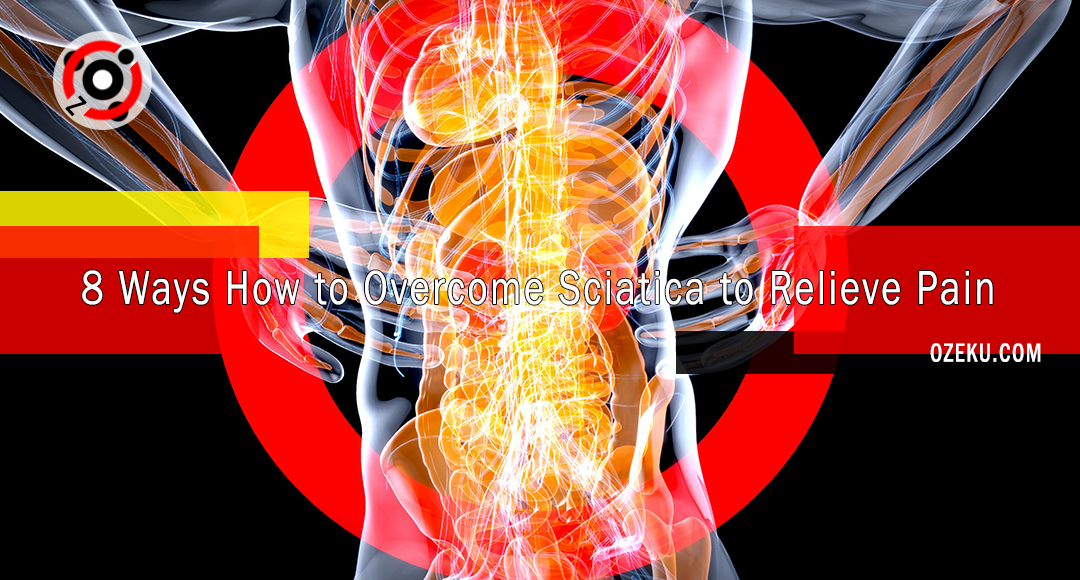Contents
What is Sciatica?
Sciatica refers to a medical condition characterized by pain that radiates along the path of the sciatic nerve, which is the longest nerve in the body. The sciatic nerve runs from the lower back, through the buttocks, and down the back of each leg. Typically, sciatica affects only one side of the body.
The most common cause of sciatica is a herniated or slipped disc in the spine. When a disc bulges or ruptures, it can press against the nerve roots that form the sciatic nerve, resulting in pain, inflammation, and other symptoms. Other potential causes of sciatica include spinal stenosis (narrowing of the spinal canal), degenerative disc disease, spondylolisthesis (when one vertebra slips forward over another), muscle spasms, and injury.
The hallmark symptom of sciatica is pain that radiates from the lower back through the buttocks and down the leg. The pain can vary from a mild ache to a sharp, burning sensation or even an electric shock-like feeling. Other symptoms may include numbness, tingling, or weakness in the affected leg or foot.
Read Also : 8 Easy Ways to Cleanse the Lungs from Excess Phlegm
Types of Treatment for Sciatica

The diagnosis of sciatica is typically made through a physical examination, medical history review, and imaging tests such as X-rays, MRI scans, or CT scans. Treatment options for sciatica depend on the underlying cause and the severity of symptoms. They may include:
- Self-care measures: Rest, avoiding activities that worsen the pain, applying ice or heat packs, and over-the-counter pain medications can help alleviate mild sciatica symptoms.
- Physical therapy: Specific exercises and stretches can improve flexibility, strengthen the muscles supporting the back, and relieve pressure on the sciatic nerve.
- Medications: Nonsteroidal anti-inflammatory drugs (NSAIDs), muscle relaxants, and sometimes oral steroids can help reduce pain and inflammation.
- Epidural steroid injections: In some cases, corticosteroid medications can be injected into the space around the affected nerve root to provide temporary pain relief and reduce inflammation.
- Surgical intervention: If conservative treatments fail to provide relief, surgery may be considered in certain cases, such as severe pain or progressive neurological deficits. The surgical options range from removing the herniated portion of a disc to more extensive procedures like spinal fusion.
It’s important to consult with a healthcare professional for an accurate diagnosis and appropriate treatment plan tailored to your specific situation.
Read Also : 9 Best Tips for Keeping Your Body Energetic When Parenting
8 Ways How to Overcome Sciatica to Relieve Pain
Sciatica pain can attack the waist, buttocks, so that one part of the leg has unbearable pain. The good news, there are various ways from exercise to surgery to help relieve sciatica pain. What are the ways?
Various effective ways to deal with sciatica pain
Sciatica (sciatica) is a neurological disease characterized by pain arising from damage to or pinching of the sciatic nerve in the lower back. This nerve is located in the lower back down to the feet, to be precise under the knees.
Generally, this condition is caused by a disc (herniated disc) protruding into situs resmi waktogel the spine and pressing on a nerve.
Some people equate the pain of sciatica with the pain of a toothache.
So, to make the pain lighter and subside, try various effective ways to deal with sciatica pain, including the following.
1. Cold and warm compresses
To relieve injury to the sciatica nerve, you can also use cold and warm compresses.
At first, you can relieve pain and swelling by using a cold compress. Place an ice cube on the sore for 20 minutes several times a day.
After a few days, follow up with a warm compress. You can use a bottle filled with warm water to compress the painful area for 20 minutes.
If the pain is still felt, you can continue to use cold and warm compresses alternately according to what makes you feel more comfortable.
2. Take drugs
If needed, you can also take over-the-counter medicines as a way to treat and relieve pain, inflammation and swelling due to sciatica.
Generally, the drugs used are from the non-steroidal anti-inflammatory drug (NSAID) class, such as aspirin, ibuprofen, and naproxen.
However, be careful when using aspirin because it risks causing injury and bleeding in the digestive tract for some people.
To be safer, you should only take medicines on the advice of a doctor, okay!
3. Sports
If the sciatic pain is not severe but persists for several weeks, your doctor may suggest exercises and stretches that can reduce pressure on the sciatic nerve.
These sports movements can include walking, swimming, stretching exercises, and water aerobics.
Basically, there is no need for strenuous exercise. Walking 15-20 minutes can also be a way to deal with sciatica pain.
If you find that you are uncomfortable, you can swim or do aerobic exercises in the water. Exercising in water can reduce pressure on the back which can relieve pain.
In addition, you can also go to a therapist to help choose the right stretching and exercise movements.
This aims to help restore back flexibility, stabilize the spine, and reduce the severity of the injury.
4. Acupuncture

Research published in the Journal of Traditional Chinese Medicine found evidence that out of 30 sciatica pain sufferers, 17 people were able to recover and 10 others felt they could overcome and reduce symptoms by doing acupuncture.
Acupuncture is an alternative treatment by sticking special needles at certain points on the body.
These points are usually located along the meridians or points of the body’s vital energy and force.
Stimulating points along the body’s meridian pathways is thought to clear blockages and stimulate the central nervous system.
That way, the body is expected to be able to release various pain-killing chemicals which in turn relieve sciatica symptoms.
Even so, further research still needs to be done to prove
If you want to try acupuncture, make sure to choose an official and licensed or certified acupuncturist to make it safer.
5. Trigger point massage
Trigger point massage is an effective way to treat sciatica pain.
This method is done by doing massage at the point where the pain appears. Massage is usually done on the muscles of the lower back, waist, thighs and buttocks.
Visit an expert therapist who can provide massage at the right point. Generally, you will need to do 7 to 10 treatments.
But again, not everyone is suitable for this treatment. You can replace it with other treatments if this method doesn’t make a difference or relieve the pain.
6. Chiropractic care
Chiropractic care is a type of therapy that is performed to help treat bone and muscle problems through manual manipulation so that the body is able to heal itself.
Research published in the Journal of Manipulative and Physiological Therapeutics found an interesting fact.
According to the journal, people who visited a chiropractor 3 times a week for 4 four weeks and continued weekly visits began to feel positive changes and were able to reduce medication.
Repairs to the spine can create a nervous system response that can reduce pain and restore normal joint mobility.
In addition, this treatment is also reported to help reduce inflammation.
7. Epidural steroid injections
If you experience continuous pain and it doesn’t go away within a full month, the way to deal with sciatica that is generally recommended by doctors is to do steroid injections.
Epidural steroid injections are performed by injecting the drug directly into the spinal space and usually using an X-ray to the lower back near the sciatic nerve.
This is done so that the injection is done at the right point. Epidural steroid injections are done with the intention of reducing inflammation within the nerve branches.
As a result, the part that is injected will be numb because this injection blocks the nerves by preventing the brain from sending signals to the lower body.
8. Operation
Most people with sciatica do not usually need surgery.
However, surgery may be necessary if the sciatica does not improve after 6 months of other treatments.
Surgery as a way to deal with the causes of sciatica directly.
For example, if the pain is caused by a herniated disc pressing on the sciatic nerve, then surgery may be needed to correct the position of the bones.
When to see a doctor?
If it’s only mild, sciatica (sciatica) can usually heal on its own without treatment. New treatment needs to be done if you experience the following conditions.
- Symptoms do not go away after home remedies are used.
- The pain is moderately severe, gets worse, or continues to occur after more than 1 week.
- Sudden onset of severe pain in the lower back or leg and accompanied by numbness or muscle weakness in the leg.
- Pain from a serious injury, such as a traffic accident.
- Difficulty controlling bowel movements (BAB) or urination (BAK).
The various ways to deal with sciatica above are expected to help relieve the pain you experience.
In some cases, self-medication may relieve symptoms. However, don’t delay to see a doctor if the symptoms don’t go away after self-care.
The doctor may suggest medical treatment, such as administering drugs to surgery, if necessary.




